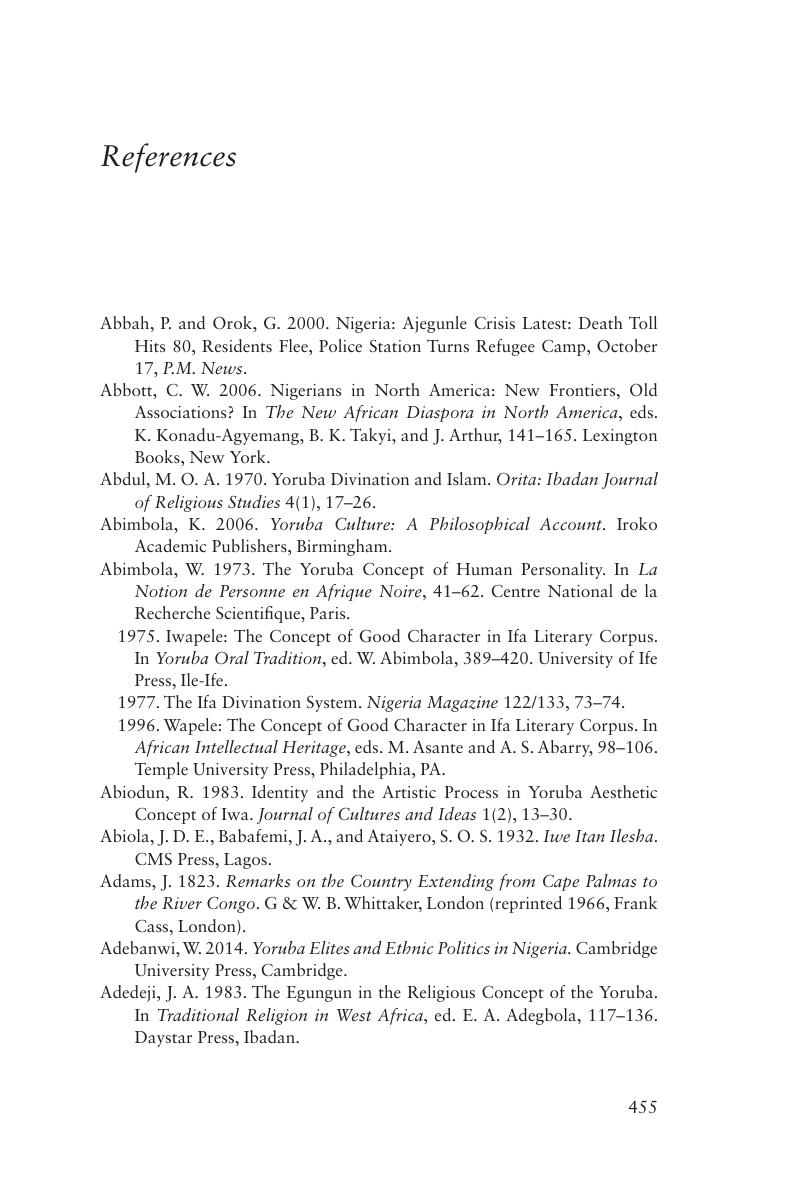Book contents
- The Yoruba from Prehistory to the Present
- The Yoruba from Prehistory to the Present
- Copyright page
- Dedication
- Contents
- Figures
- Preface
- Acknowledgments
- 1 Geography and Society
- Part I Long Historical Formations
- Part II Yoruba Polities and Entry into the Atlantic World
- Part III The Nineteenth Century: Wars and Transformations
- Part IV Economic, Social, and Cultural Practices over Time
- Part V Colonial Yoruba
- Part VI Postcolonial Yoruba
- Notes
- References
- Index
- References
References
Published online by Cambridge University Press: 01 July 2019
- The Yoruba from Prehistory to the Present
- The Yoruba from Prehistory to the Present
- Copyright page
- Dedication
- Contents
- Figures
- Preface
- Acknowledgments
- 1 Geography and Society
- Part I Long Historical Formations
- Part II Yoruba Polities and Entry into the Atlantic World
- Part III The Nineteenth Century: Wars and Transformations
- Part IV Economic, Social, and Cultural Practices over Time
- Part V Colonial Yoruba
- Part VI Postcolonial Yoruba
- Notes
- References
- Index
- References
Summary

- Type
- Chapter
- Information
- The Yoruba from Prehistory to the Present , pp. 455 - 490Publisher: Cambridge University PressPrint publication year: 2019



